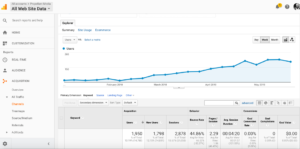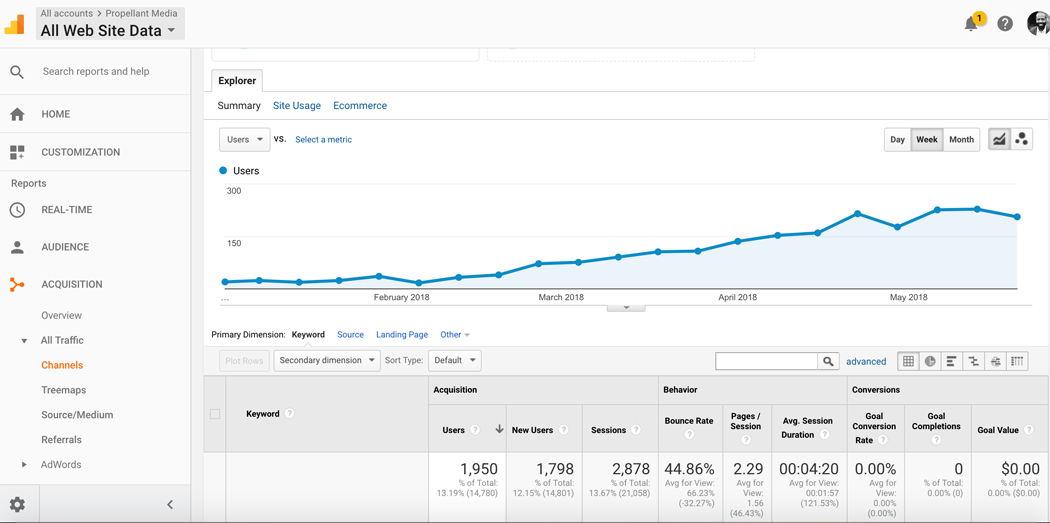Back in my yellow pages days, we talked a lot about two kinds of advertising. Creative Media, like TV, radio, newspaper and billboards was used to “create” interest and awareness in a business or product. Directional Media, like yellow pages were used to capture prospects, or “direct” traffic, when they were looking for a specific product, service or business.

Back then, yellow pages was pretty much the only form of directional media and nearly every local business owner who wanted to be found when prospects were looking, invested in the yellow pages.
Even if they were doing all sorts of creative media, they still needed to “anchor” their advertising with yellow pages because no one writes down a phone number for a business when they are driving by a billboard that interests them. In fact, most creative advertising impacts users when they are doing something else (watching TV, listening to the radio, even reading a newspaper article), so they are rarely motivated to take immediate action.
When creative media worked, and people were ready to pursue the business, they turned to the yellow pages.
That dynamic still exists today. Search engines are the new king of directional media and there’s a new player among creative media too – online display advertising. You probably know them as – banner ads.
Display ads work like traditional media in that they create interest or awareness in a product, service or business while the user is doing other stuff – in this case, surfing the web.
And like traditional media, display rarely inspires immediate action. Although you can click on an ad, most people don’t. According to Doubleclick’s Display Benchmark Tool, April 2015, only about 6 in 1000 people click display ads. And while there are lots of reason that CTR is so low (We don’t want to lose our place in the article we’re currently reading. We open a new browser and go directly to the display ad’s site. We Google the brand name later.), display ads are still effective.
Because we’ve gotten used to tracking internet marketing via the click, we’re struggling to measure the value of display advertising. And while it’s easy to have faith in TV commercials, it’s harder to trust that display ads are having a positive impact on our business.
Here are four ways you can use Google Analytics to measure that positive impact.
ONE. Go ahead and measure the click. Even at an abysmal .06% CTR, if a business runs 250,000 impressions in a month, they’ll attract 150 clicks. These are 150 leads who were so interested in the ad that they actually stopped what they were doing to click it. If a business can close 2% of those leads, that’s 3 new customers. Do 3 new customers cover the cost of the advertising? If yes, we’ve already found the value. If not, let’s keep looking.
NOTE: These are pretty conservative numbers. I’ve used Doubleclick’s .06% CTR, but display can certainly perform better than that. And I have to believe that great businesses can close more than 2% of leads that are so interested that they clicked an ad.
TWO. Measure an increase in overall traffic to the site. Compare the dates when the display campaign ran to the same period the month (or even better, the year) before the campaign ran. We’ve seen huge increases in traffic when display is added to the mix. An attorney who added display to his SEO/SEM campaign saw a 127% increase in site traffic year over year. This kind of traffic increase helps measure those users who found their way to the site without clicking the ad.
THREE. Measure the quality of the traffic. Lower bounce rates, higher session duration and more page views all indicate that traffic coming to your site is of good quality, that they are interested in your business. When these metrics are better when display is running, that’s more proof that display is attracting great leads to the site.
NOTE. When running site retargeting, a business may see a decrease in % of new sessions. This is because site retargeting is doing a great job of bringing those users who left your site back for another visit.
FOUR. Measure brand searches. It’s so obvious, but most of us don’t even think to measure this. Consider that you’re getting your message out in front of prospects in an environment where they spend 3 to 4 hours a day – the world wide web. They see your ad multiple times while they are reading the news, checking social media, playing an app on their smartphone, whatever. When they get to the point where they want to know more about your business, the last thing they’re going to do is go to ESPN.com or open their weather app in the hopes that your ad happens to be there.
Instead, they’re going to search for your business by name. How many times have you done this yourself? You see an ad, ignore it. You see it again, ignore it again. A couple of days later, after seeing the ad seven or eight times, you think to yourself, “I really do want to check out that new restaurant.” Next thing you’re doing is Googling “Joe’s Kansas City BBQ” and making plans for date night.
You didn’t click the ad when you saw it, but you remembered Joe’s and found your way to the site through a search.
So when business owners see increased traffic from keywords that include their business name, it’s probably thanks to the display ad campaign.
Hold the phone, the title of this article mentions something about measuring traditional media in Google Analytics too. Before I go there, one more story from my yellow pages days.
When I sold YP, one of my favorite things to hear from an advertiser was that they were running television or radio ads. I would immediately convince them to put a call tracking number in their YP ad. Guess what happened to those call tracking numbers when paired with traditional media. I’ll tell you. The call volume increased dramatically. Every time.
What did it prove? Well as the YP rep, I of course pointed out how valuable it was to keep buying directional media from me. Had the business not been represented in the yellow pages, chances are those call would have been lost to someone who was.
But it also proved that the television and radio were working. Something that was, and continues to be, very hard to do.
How might that play out today? If, after seeing a television commercial, you wanted to contact the businesses, what would you do? Wait for the commercial to come on again? Look them up in the yellow pages? Or would you Google the business name?
That’s what I thought.
So consider the second, third and fourth strategies in this article. Increased website traffic, improved quality of the web traffic and more brand searches are also the results of a good traditional marketing campaign.
Of course, if the advertiser is running traditional media and online display at the same time, this complicates our metrics. But in the end, isn’t the overall increase what is most important – even if it is coming as a result of more than one marketing campaign?
Coming soon – we’ll explore the synergy that comes from a marketing campaign that includes a blend of traditional media and digital advertising.
Thanks for reading,
David McBee
https://www.linkedin.com/pulse/using-google-analytics-measure-display-performance-david-mcbee/

